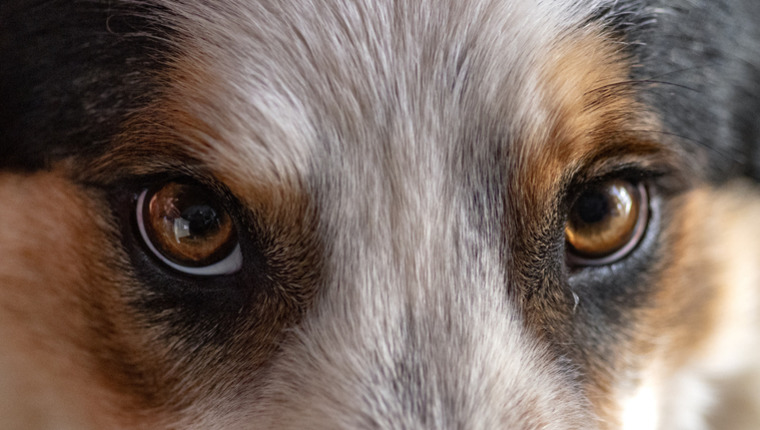
With their uncanny ability to sniff out treats in a cupboard or hear a whistle from over a mile away, most pet parents are keenly aware of their dogs’ fantastic senses of smell and hearing. But when it comes to vision, people have the upper hand – at least sometimes. Jaycie Reisberg, DVM, DACVO, a veterinary ophthalmologist at MedVet Salt Lake City, talked to Yahoo! about how dogs see.
Dogs’ Eyes Are Different
Dogs’ eyes and humans’ are similarly structured, with components like the sclera, cornea, conjunctiva, iris, pupil, lens, and retina. But dogs’ peepers also contain elements that human eyes lack, including a third eyelid and tapetum lucidum, which reflects light through the retina.
Reisberg explained that both species also have light-sensitive cells, called cones and rods, at the back of the eye. Cones and rods help the eye decipher colors and size, shape, and brightness, respectively. People have more cones, while dogs have more rods.
How Dogs’ Vision Compares to People’s
According to Reisberg, people’s vision is much better than canines’.
“If you hold your hand close to your dog’s face, it’ll be a bit blurry,” he told the publication. “And they don’t see as crisply as we do for distance either. Instead of 20/20 vision, dogs have the equivalent range of 20/40 to 20/50.”
In other words, if you can see an object clearly from 20 feet away, your dog will see it as though they were 40 or 50 feet away.
That said, dogs can detect motion and see more clearly in the dark thanks to the tapetum lucidum and extra cones.
Dogs also have two types of cones in their eyes instead of three. Because of this, they see everything in a spectrum of blue and yellow, while most humans see tones of blue, yellow, red, and green.
Reisberg said some dog breeds, like Labrador Retrievers, can be nearsighted or farsighted, though it’s unlikely to affect them like humans.
However, age and related eye conditions, such as glaucoma or cataracts, can significantly impede a dog’s vision. Feeding your pet a healthy diet with Vitamin A and omega-3 fatty acids can help keep their vision healthy. Taking them to routine veterinary checkups is equally essential, as these visits are an opportunity to spot and address issues early.









